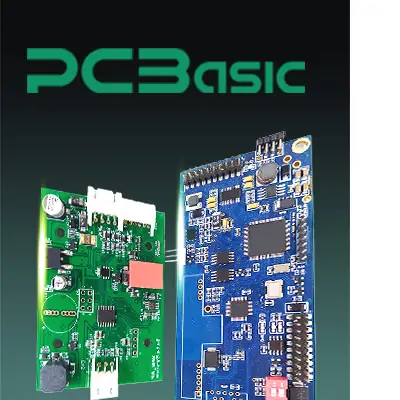

Global high-mix volume high-speed PCBA manufacturer
9:00 -18:00, Mon. - Fri. (GMT+8)
9:00 -12:00, Sat. (GMT+8)
(Except Chinese public holidays)


Global high-mix volume high-speed PCBA manufacturer
9:00 -18:00, Mon. - Fri. (GMT+8)
9:00 -12:00, Sat. (GMT+8)
(Except Chinese public holidays)
HomePage > Blog > Knowledge Base > Things You Need to Know About Circuit Card Assembly

Circuit card assembly, commonly known as CCA, is the backbone of the current technologies to create a circuit card. However, this is a very detailed process of manufacturing and assembling circuit cards according to the design that has been given.
This article guides you through each stage, from the design phase, where a circuit layout is drawn out on paper, to the actual testing and inspection phase. You will observe how it is done through organized manufacturing procedures, including the integration of computer-aided manufacturing technologies, and how components are connected and soldered appropriately for maximum performance of the final product.
Whether it is used in electronic gadgets, car parts or others, the quality of CCA production is relevant in enhancing the functionality of several products that are the driving force of society.
A circuit card assembly is an electronic assembly in which all or a part of the electronic components are mounted on a printed circuit board (PCB). These include but are not limited to resistors, capacitors, transistors, and integrated circuits, all of which are soldered onto the board to form an operational circuit.
The term "card" is mainly applied to modular electronic systems wherein the assembly can be plugged into a more extensive system or backplane. CCAs are particularly important in the aerospace, military, and telecommunications industries. Compared to the more general term "circuit board assembly", the term "CCA" may be less commonly recognized in other industries. In general, circuit boards and circuit cards are interchangeable.

Flex circuit boards
Flex circuit boards comprise precise materials like polyimide and other materials related to medical applications. It has several uses in medical applications.
Rigid PCBs
Rigid PCBs are used where rigidity is desired. Most of these boards have what is referred to as flexible and rigid layers, making them referred to as multi-layer boards.
HDI circuit boards
Indeed, some devices need tight circuit boards, such as the HDI circuit boards. Due to this, they are ideal for complicated devices and appliances such as refrigerators, washing machines, and television sets, among others.
Micro via circuit boards
Micro via circuit boards have a thinner profile, thus having small interconnecting features and multiple internal layers; they are used in gadgets with limited surface area, such as smartphones.

Circuit card assembly manufacturing is a complicated process. It begins at the design level, where the circuit card is planned. This first step is crucial in the successful manufacture of CCA. Then is the CAM phase, in which the design is automated with the help of computers once the design process is over.
In the CAM stage of the process, the design is also used in generating routes and finally provides the physical layout of what the actual printed circuit board should be like. Then, a substrate is selected and utilized, and specific patterns are drawn through a chemical process.
Next, the necessary parts are arranged on the printed circuit board and soldered. After forming circuit boards, they are also subjected to tests and inspections to ensure that the circuit boards have met all the stated tests. In this way, the circuit card assembly can be used.
If you want high-quality circuit card assembly products, you can come to PCBasic. PCBasic offers a wide range of PCB services that address the challenges of high-quality circuit card manufacturing, providing solutions for various industrial needs.

CCA (Circuit Card Assembly) and PCBA (Printed Circuit Board Assembly) refer to the same thing with a circuit board with components. They both present the process of components, including resistors and capacitors, and the use of these mounting components across various industries. PCBA has a broader application in commercial and industrial products. On the other hand, CCA has applications in defense industries. Both are distinct in different terminologies like specific standards, regulations, and other requirements. CCA is popularly known for its higher performance and safety precautions.
Usually, circuit card assembly and printed circuit board assembly are used mutually.
Now, let's look at the differences between PWB and PCB.
Complexity
PCBs are complex structures with multiple layers and configurations, while Printed Wiring Boards (PWBs) are generally simpler, often being single-layered and less intricate.
Components
Typically, there are no electronic components soldered on PWBs. On the other hand, PCBs are required to hold diverse electronic components and are very useful in complex electronics.
Usage
If you need a simple connection for your electronic device, then PWB is the way to go. Otherwise, PCB is a better way.
Manufacturing
Just like we talked about a bit earlier -- PWB manufacturing is super simple. However, in the case of PCB making, it is very challenging because of their multiple layers.
Design
In PWB, design concepts are fundamental and straightforward. However, PCB designs are much more complicated, as designers need to allocate space for each electronic component and make connections.
Thermal Management
PWB, with its simpler design, is suitable for basic thermal management. While PCB, with multi-layered and complex design, require advanced thermal management techniques for effective heat control in high-density applications.

Circuit card assembly is widely used. Here are some of its applications.
Consumer Electronics
Circuit card assembly, or CCA, can help a lot of people who are looking for upgrades in laptops and gaming consoles. We have reached the stage where CCA has become extremely skinny and requires very little space. It is convenient and capable of being used in different applications as well as on the other side.
Medical Devices
CCA plays a huge role in the medical field, especially in MRI machines and other diagnostic apparatuses. These tiny yet mighty assemblies offer the needed performance in medical equipment to ensure they work as required, especially in life-sensitive operations.
Industrial Automation
It is often used in industrial automation, such as robotic systems and other automated processes, due to its durability and versatility in handling complex industrial tasks. It plays a crucial role in advancing automation.
Automotive
In many cars, specifically in modern vehicles, CCA plays a significant role in the functionality of engine control units and other electronics. Because of its small size and high reliability, it is used in automotive systems, helping to improve the performance of today's cars.
Aerospace and Defense
In defense and Aerospace, manufacturers use circuit card assembly as well.
CCA plays an important role in the manufacturing of electronic devices. Circuit card assembly (CCA) technology has brought an immense transformation in electronics, enabling the formation of compact devices across multiple industries.
 About PCBasic
About PCBasic
Time is money in your projects – and PCBasic gets it. PCBasic is a PCB assembly company that delivers fast, flawless results every time. Our comprehensive PCB assembly services include expert engineering support at every step, ensuring top quality in every board. As a leading PCB assembly manufacturer, we provide a one-stop solution that streamlines your supply chain. Partner with our advanced PCB prototype factory for quick turnarounds and superior results you can trust.

Assembly Enquiry
Instant Quote
Phone contact

+86-755-27218592
In addition, we've prepared a Help Center. We recommend checking it before reaching out, as your question and its answer may already be clearly explained there.
Wechat Support

In addition, we've prepared a Help Center. We recommend checking it before reaching out, as your question and its answer may already be clearly explained there.
WhatsApp Support

In addition, we've prepared a Help Center. We recommend checking it before reaching out, as your question and its answer may already be clearly explained there.
